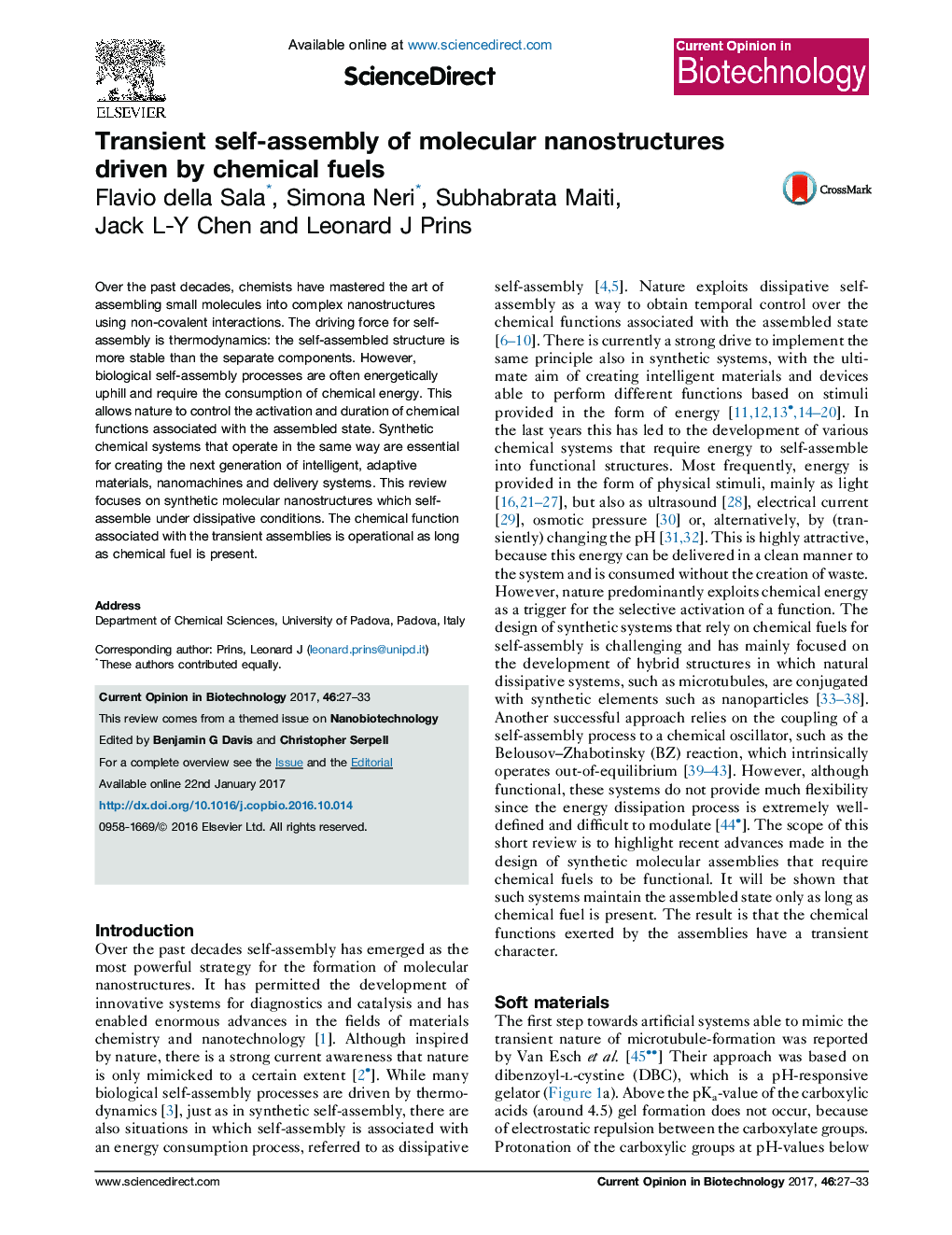| Article ID | Journal | Published Year | Pages | File Type |
|---|---|---|---|---|
| 6451457 | Current Opinion in Biotechnology | 2017 | 7 Pages |
â¢Self-assembly processes can be activated by chemical fuels.â¢Fuel consumption causes in spontaneous dissociation of the assembly.â¢The lifetime of the assembled structures depends on the concentration of fuel.â¢Chemical functions of the assembled structures have a transient nature.
Over the past decades, chemists have mastered the art of assembling small molecules into complex nanostructures using non-covalent interactions. The driving force for self-assembly is thermodynamics: the self-assembled structure is more stable than the separate components. However, biological self-assembly processes are often energetically uphill and require the consumption of chemical energy. This allows nature to control the activation and duration of chemical functions associated with the assembled state. Synthetic chemical systems that operate in the same way are essential for creating the next generation of intelligent, adaptive materials, nanomachines and delivery systems. This review focuses on synthetic molecular nanostructures which self-assemble under dissipative conditions. The chemical function associated with the transient assemblies is operational as long as chemical fuel is present.
Graphical abstractDownload high-res image (64KB)Download full-size image
